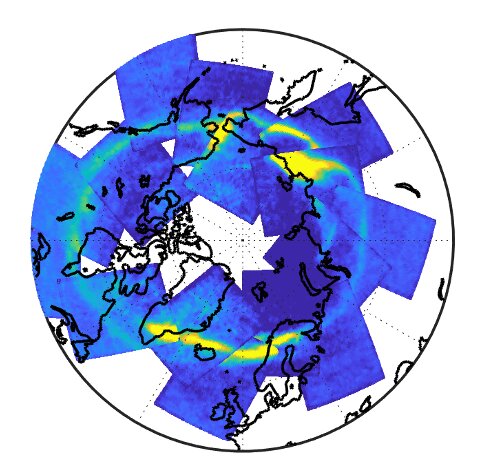For centuries, scientists and sky gazers have been captivated by the night sky’s display of “northern lights” or auroras. However, little was known about the aurora associated with carbon dioxide until now.
In a groundbreaking study published in Geophysical Research Letters, scientists have revealed global observations of carbon dioxide-associated auroras through satellite measurements.
When we think of auroras, we often imagine the mesmerizing green and red lights dancing across the sky. However, there are several associated emissions occurring in different atmospheric regions that are not visible to the naked eye.
Earth’s atmosphere consists of different layers, including the troposphere where weather occurs, the stratosphere with the ozone layer, the mesosphere where meteors burn up, and the thermosphere and ionosphere above, which are home to many auroral emissions. The commonly observed green and red auroras occur near 100 km and 250 km in altitude, respectively, due to excited states of atomic oxygen.
While carbon dioxide is widely known for its greenhouse gas effects in the troposphere, it also exists in trace amounts in the Earth’s atmosphere at the edge of space, around 90 km above the surface. During an aurora, carbon dioxide becomes vibrationally excited and emits more infrared radiation than typically observed in the atmosphere.
To capture these elevated infrared signals, lead author Katrina Bossert, a scientist from Arizona State University, and an international research team utilized the Atmospheric Infrared Sounder (AIRS), which collects global infrared energy emitted from Earth’s surface and atmosphere. The data obtained by AIRS provides 3D temperature and water vapor measurements and a range of trace gases, surface, and cloud properties. AIRS is carried by NASA’s Aqua satellite.
By isolating the emissions from carbon dioxide during an aurora, the research team has provided a valuable dataset for further studies on global aurora and energetic particle precipitation.
“This provides a new way to observe Earth’s aurora from space, allowing us to study different auroral emissions associated with different altitudes and particle energy,” said Bossert, an assistant professor at the School of Earth and Space Exploration and the School of Mathematical and Statistical Sciences at ASU. “The observations of carbon dioxide auroral emissions offer insights into the physical processes related to the aurora.”
This dataset and analysis method mark the first daily global observations of carbon dioxide-associated auroras in both the northern and southern hemispheres using a nadir-viewing satellite instrument. The measurements captured by the satellite span over 20 years and can contribute to future studies on aurora and energetic particle interactions with Earth’s atmosphere.
The study also includes contributions from Lars Hoffmann of Jülich Supercomputing Centre, Martin Mlynczak of NASA Langley Research Center, and Linda Hunt of Science Systems and Applications Inc.
More information: Katrina Bossert et al, Observations of 4.26 μm CO2 Auroral Emissions From AIRS Nadir Sounder Measurements, Geophysical Research Letters (2023). DOI: 10.1029/2023GL103856
Citation: Satellite captures carbon dioxide aurora from space (2023, June 20) retrieved 20 June 2023 from https://phys.org/news/2023-06-satellite-captures-carbon-dioxide-aurora.html
This document is subject to copyright. Apart from any fair dealing for the purpose of private study or research, no part may be reproduced without written permission. The content is provided for information purposes only.
Denial of responsibility! TechCodex is an automatic aggregator of the all world’s media. In each content, the hyperlink to the primary source is specified. All trademarks belong to their rightful owners, and all materials to their authors. For any complaint, please reach us at – [email protected]. We will take necessary action within 24 hours.

Jessica Irvine is a tech enthusiast specializing in gadgets. From smart home devices to cutting-edge electronics, Jessica explores the world of consumer tech, offering readers comprehensive reviews, hands-on experiences, and expert insights into the coolest and most innovative gadgets on the market.


